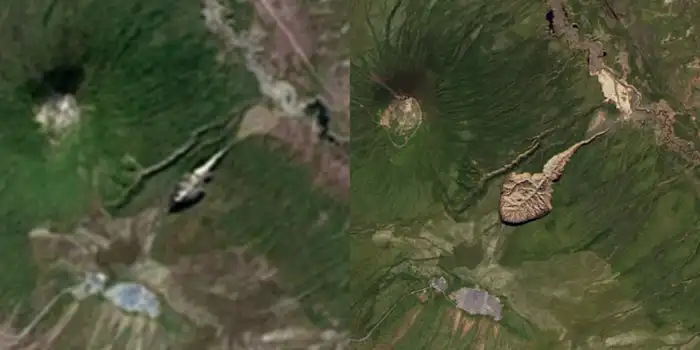The Arctic tundra is changing so fast that it is speeding up the climate crisis, top scientists say

A member of a fire crew makes their way to the Riley Fire in Denali National Park and Preserve, Alaska
From Alaska to Siberia, the Arctic is changing so rapidly that there is no “normal” there now, scientists warn. The consequences reach across the globe.
The Arctic tundra now releases more carbon than it naturally draws down from the sky, as wildfires burn down its trees and permafrost thaw releases potent gases from its soil.
Once-brown regions are turning green with vegetation, while green areas are turning brown and barren. Sea ice and herds of caribou are disappearing.
This summer was the wettest on record for the Arctic overall, as rain is becoming more common than snow in some areas. Region by region, though, rainfall and the snow season are knocking down both high and low records.
Decades of data on “vital signs” suggest that “the Arctic exists now within a new regime, in which conditions year after year are substantially different than just a couple of decades ago,” Twila Moon, a scientist at the National Snow and Ice Data Center, said in a briefing on Tuesday.
“Climate change is not bringing about a new normal,” she added. “Instead, climate change is bringing ongoing and rapid change.”
That’s because the Arctic is warming about four times faster than the rest of the planet, according to previous research.
The increase in average temperatures is changing weather and landscapes in the Arctic, speeding up the climate crisis worldwide.
Giant holes, beaver invasions, and polar wildfires
For example, beavers are moving into Alaska’s tundra and transforming its waterways with their dams, as warmer conditions have brought more wooded, comfortable riverbanks for them.
In Siberia, a giant hole in the ground is rapidly growing because the permafrost — a layer of soil that used to be permanently frozen — is thawing.

Satellite images from 1999 and 2017 show how much the Batagaika megaslump has grown (and how much satellite imaging has improved).
That’s an extreme example, but melt and thaw is happening all over the planet’s northernmost regions. Combined with drastic swings in weather year-to-year, these changes are wreaking havoc on Arctic landscapes, ecosystems, and people.
“These dramatic differences are making it difficult for communities to plan and they create safety issues for people who are used to more stable ice, snow, and temperature,” Moon said.

Melting permafrost and the disappearance of sea ice, which once formed a protective barrier, threaten houses in the Yupik Eskimo village of Quinhagak in Alaska.
She was presenting the Arctic Report Card, an update that the National Oceanic and Atmospheric Administration publishes each year, at the fall meeting of the American Geophysical Union.
This year’s report revealed a crucial shift in northern landscapes: The Arctic tundra is no longer a net carbon sink, with its boreal forests pulling carbon dioxide from the sky. Now it’s a net source of carbon emissions.
“This transition from a carbon sink to a source is of global concern,” Brendan Rogers, a scientist studying the tundra at the Woodwell Climate Research Center, said in the briefing.
He added that the tundra’s carbon emissions are relatively small for now, “but it’s that transition that we’re concerned about.”
This shift is partly due to giant polar wildfires burning down tundra vegetation and all the carbon it’s stored. It’s also because of permafrost thaw, which releases large amounts of methane — a heat-trapping gas more potent than carbon dioxide — as bacteria in the soil digest thawing plant matter.
Meanwhile, rising Arctic temperatures are driving ice melt, including on the Greenland Ice Sheet, which is a major contributor to sea-level rise worldwide. Rising oceans are already increasing flooding in coastal cities across the planet.
For example, US coastal cities from Boston to San Diego have seen more and more flood days per year every decade since 1950, according to the Environmental Protection Agency.
Arctic science is more important than ever
Reporters asked the NOAA scientists about the incoming Trump administration and whether they were concerned about losing funding for their Arctic research.
“The need, the requirement, the demand signal if you will, is higher than ever before,” Richard Spinrad, the NOAA Administrator, said in the briefing.
Changes in extreme weather and sea level across the globe show that “there’s a need for these investments to increase right now,” he said, adding that studies have shown “the return on those investments is extraordinary, in many cases 10 to 1 in terms of protection of lives and property.”






